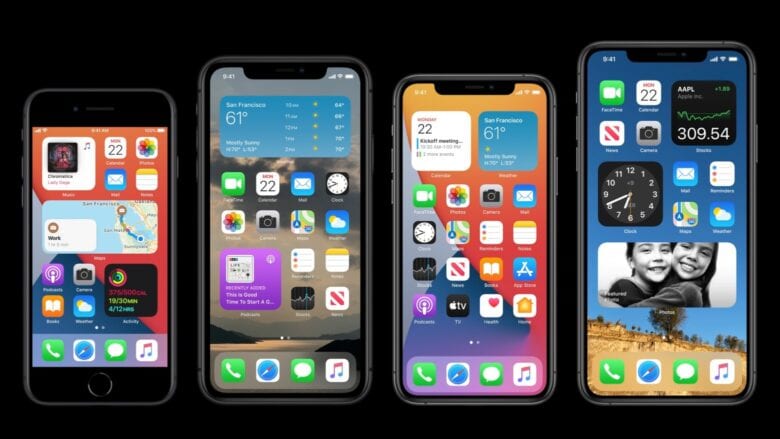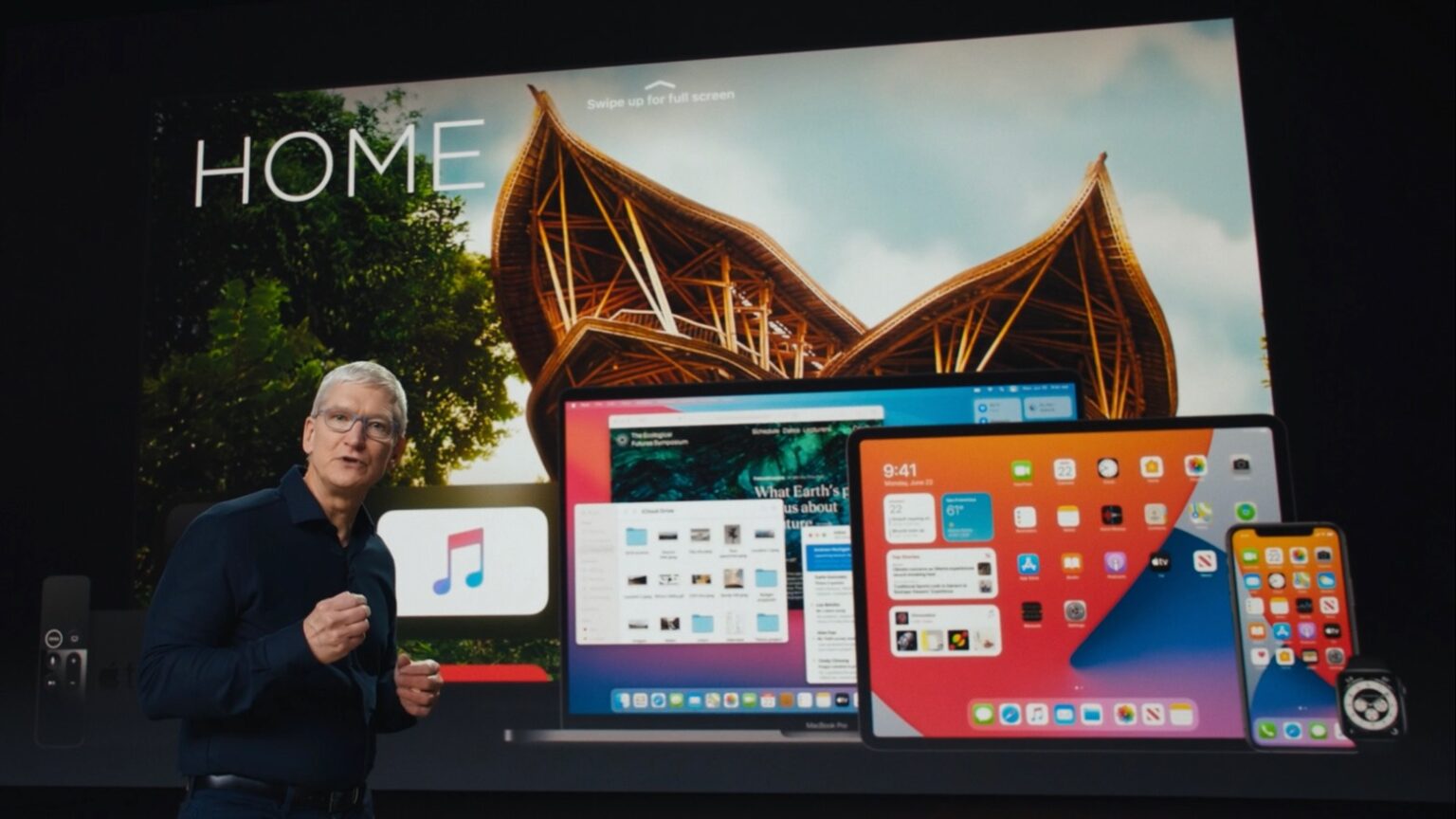 Apple rose to the challenge of holding a keynote for its annual Worldwide Developers Conference in an empty auditorium Monday. A range of executives took the wraps off operating system upgrades for Mac, iPhone, iPad … the whole swath of Cupertino’s devices.
Apple rose to the challenge of holding a keynote for its annual Worldwide Developers Conference in an empty auditorium Monday. A range of executives took the wraps off operating system upgrades for Mac, iPhone, iPad … the whole swath of Cupertino’s devices.
The presentation went surprisingly well, considering that the COVID-19 pandemic prevented the presence of the usual odd mix of highly enthusiastic Apple employees and professionally skeptical journalists.
The tone was rather serious, with CEO Tim Cook skipping the usual opening skit in favor of discussing Apple’s efforts to fight racism.
Still, the company had plenty to say about upcoming Apple operating systems. Here are the biggest revelations from WWDC 2020.
1. macOS gets a facelift
With macOS Big Sur, Apple is giving the Mac a massive overhaul. Cupertino’s software designers clearly put a lot of thought, and a lot of love, into what Apple Sr. VP of Software Engineering Craig Federighi called at WWDC 2020 “the biggest change since the introduction of Mac OS 10.”
From top to bottom, the Mac’s upgraded user interface looks better, more intuitive and far more customizable than macOS Catalina. The Dock will look different, as will the menu bar. And features you know and love from iOS, like Control Center, are coming to the Mac this fall.
Some of Apple’s built-in Mac apps benefited from some serious attention, too, starting with revitalized app icons. Big changes to Safari, like new tab management features and a Privacy Report button that tattles on data-hungry websites, topped the list. But Apple’s other Mac apps — Messages, Maps, etc. — will benefit from upgrades that bring them closer to parity with their iOS counterparts as well.
2. Home screen widgets for iPhone. Finally.

Screenshot: Apple
iOS 14 brings widgets to your iPhone Home screen at long last. Apple always avoided this because it’ll inevitably bring comparisons to Android, which went all-in on widgets long ago. iPhone widgets can be of different sizes, and placed anywhere you want.
In addition, this update automatically sorts all your apps in the new App Library so you don’t have to. iOS 14 also makes improvements to Siri and adds new features to Messages, like the ability to pin contacts and conversations to the top of the app so they’re always easily accessible.
Other changes coming to iPhone include an enhanced CarPlay with CarKey integration, more Memoji options and App Clips, which are lightweight versions of apps that offer important features right when you need them most.
3. iPadOS 14 embraces the stylus with handwriting recognition
iPad users will be able to use Apple Pencil in place of a keyboard in iPadOS 14. An Apple Pencil can be used to enter text just by writing words into any text box, thanks to a new system Apple calls Scribble. This is a feature Apple likely avoided until now because it brings back memories of the embarrassing early days of the Apple Newton from the 1990s.
But mostly what iPad users found out at WWDC 2020 is that there won‘t be huge changes coming to their tablets. The Home screen widgets from iOS will carry over to iPad, but only in a limited way. And features like more robust support for external displays will have to wait.
4. Mac dumping Intel and transitioning to Apple Silicon
One of the changes announced today will affect Macs for many years to come: Apple is leaving Intel processors behind and going with chips it makes itself. The company has been designing its own iPhone, iPad and Apple Watch processors for many years, and it’s expanding this to macOS.
The promise is MacBooks with the same performace as desktops without sacrificing battery life. And Mac users will be able to run iPhone and iPad software.
There’ll be a transition period during which third-party software developers will have to port their applications from Intel-based Macs to the new platform. But Mac users will have access to a tool that will let them install and run not-yet-converted apps.
5. Sleep tracking comes to Apple Watch
Apple gave in to years of user requests and announced watchOS 7 sleep tracking at WWDC 2020. And speaking of oft-requested features, Apple Watch wearers will be able to share their favorite watch layouts to friends and family. Or even download these configurations from websites.
Plus, Watch faces can now have multiple third-party complications from a single app. And there’s a new tachymeter for measuring speed.
CleanMyMac X: Your all-in-one Mac solution
It cleans! It optimizes! It keeps viruses at bay! And now, MacPaw’s killer app is available on Apple’s official Mac App Store, so you know it’s safe. Cult of Mac readers can get CleanMyMac X at an exclusive 30% off through July 5. Activate your discount now!6. AirPods give a theater-like audio experience
AirPods Pro have become a hot product, and they didn’t get overlooked at WWDC 2020. These truly wireless earbuds are getting a Spatial Audio feature that will provide better 3D sound. It will use motion tracking to replicate surround sound, with audio that can seemingly come from a variety of directions.
7. tvOS 14 adds picture-in-picture support
Apple TV didn’t get forgotten either. With tvOS 14, these set-top boxes will be able to play one video while watching another in a small window. Picture-in-picture is a long-requested feature.



